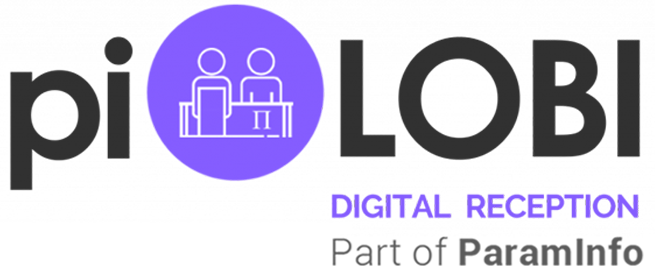
A Complete Overview of Visitor Screening Best Practices
One of the most important questions companies should consider when evaluating visitor management system and tools is how the system will facilitate their visitor screening process.
The top-most priorities for building managers are letting people in through the door, keeping them safe, and remaining compliant with capacity thresholds. But if they use the proper tools for the visitor check-in process, they can achieve much more than they think possible.
Visitor Management Systems (VMS) are deemed an asset for almost all the industries that ensure better organization and productivity among the business, education, medical, and local workplace. A VMS also helps in carrying out visitor screening effectively along with the management of visitors to minimize risks in accordance with regulations.
What is Visitor Screening?
Visitor screening refers to the procedure of validating and authorizing individuals who seek entry into a facility, ensuring that they do not present any security, compliance, or operational threats. The process is simple: it involves verifying the visitor’s identity, confirming their access rights, and assessing any potential risks.
This process allows you to establish clear criteria for who can visit and where they are permitted to go onsite. It’s especially essential in highly regulated environments like manufacturing plants, hospitals, and government offices, where safety and compliance are critical.
Beyond safety, visitor screening or guest screening also plays a vital role in fostering a secure, efficient, and welcoming environment. It not only helps manage the flow of visitors but acts as your first line of defense, identifying risks before anyone enters. Additionally, it shapes the first impression guests have of your business, impacting how they perceive your company moving forward.
The Importance of Implementing a Visitor Management System for Guest Screening
Guest screening can be conducted either manually or through sophisticated solutions such as a Visitor Management System (VMS). The latter streamlines the entire process by automating it, thereby enhancing both efficiency and security.
Beyond improving safety, a VMS provides numerous additional benefits. A primary advantage is its role in ensuring compliance. By gathering, verifying, and securely storing visitor information, a VMS assists organizations in adhering to regulatory standards. The system maintains a digital log of visitor data, which results in easily accessible, audit-ready records that can be retrieved swiftly when necessary.
Moreover, a Visitor Management System (VMS) significantly minimizes repetitive tasks, allowing workplace personnel to be relieved from labor-intensive responsibilities. With functionalities such as pre-registration emails, self-service sign-in kiosks, automated visitor logging, and notifications to hosts, a VMS reduces the necessity for manual processes at the reception area. This enables staff to concentrate on more strategic and high-value tasks, thereby enhancing overall operational efficiency.
Furthermore, a VMS bolsters workplace security by verifying the identity of every person entering the facility. By integrating with internal blocklists or third-party watchlists, the system can identify and deny access to individuals who may present a security threat, such as former employees or unauthorized visitors. This additional layer of security contributes to a safer environment for all.
How Does a Visitor Management System Work?
1. Visitor Pre-Registration
First visitors need to pre-register online before arrival, this provides necessary details for security checks and entry preparation, making on-site check-in an easy process.
2. On-Site Check-In
Once arrived at the facility, visitors check in at a kiosk and receive their visitor badge. Simultaneously, real-time notifications alerts hosts about the visitors’ arrival, keeping them informed and in control.
3. On-Site Management and Check-Out
A VMS offers many options to ensure visitors leave according to protocol, including signing out via kiosk, mobile device, and auto-sign-out.
4. Analytics & Real-Time Reporting
Log into the VMS to see visitors and contractor on-site traffic. Use the centralized dashboard to report on-site and company trends and discern actionable insights.
5. Visitor Check-Out and On-Site Management
A Visitor Management System (VMS) like piLOBI provides various convenient options to ensure visitors check out in accordance with your protocols. Visitors can sign out using kiosks, or through automated sign-out processes, streamlining the exit procedure.
6. Real-Time Analytics and Reporting
Access detailed visitor and contractor traffic data through the VMS dashboard. With a centralized view, you can easily track on-site trends, generate real-time reports, and gain actionable insights to optimize operations and improve decision-making.
Advantages of Visitor Check-In Systems
1. Enhanced Security – Implementing a visitor check-in system significantly strengthens the security protocols of your facility. With real-time tracking of visitors, you can maintain awareness of who is present in your building at all times, which is vital for daily operations and emergency preparedness.
Identity verification via photo capture serves as an added layer of security, ensuring that individuals are accurately identified as they claim. Additionally, the incorporation of watchlists and access control systems bolsters security by automatically detecting potential threats and managing visitor access to different sections of your facility.
2. Enhanced Efficiency – The automation of check-in processes significantly reduces wait times, creating a smooth and professional entry experience for guests. This increased efficiency enables your staff to focus on other critical tasks, thereby improving overall productivity.
The integration capabilities of contemporary check-in systems promote seamless data sharing between your visitor management system and various platforms, such as employee directories or security protocols, which helps to eliminate data silos and reduce the likelihood of human error.
3. Improved Visitor Experience – A modern, digital visitor check-in process fosters a professional environment from the moment guests arrive at your premises. Pre-registration options allow visitors to submit their information in advance, streamlining the check-in process upon arrival. Additionally, the provision of professionally branded badge printing enhances security while contributing to a polished and organized appearance.
Moreover, immediate notifications to hosts ensure that visitors are not left waiting in the lobby, fostering a welcoming and respectful environment. These features collectively create a positive first impression, which is particularly important for businesses that prioritize client relationships.
4. Compliance and Safety – Digital record-keeping ensures compliance and safety by offering a transparent and readily accessible audit trail, essential for adhering to regulatory requirements. Furthermore, numerous modern systems or guest screening solutions integrate health assessments and the implementation of safety protocols, which are particularly significant in the current context.
Key Aspects to Consider in a Visitor Check-In System
1. Automated Check-In and Check-Out – An essential feature of modern visitor management systems is their ability to enhance the efficiency of check-in and check-out processes. The integration of QR code scanning technology enables a seamless and contactless entry experience, which is particularly advantageous for visitors who have completed pre-registration. Additionally, integrated badge printing systems generate professional and easily recognizable visitor passes, thereby improving security and enriching the overall experience for guests.
These automated functionalities not only accelerate the entry process but also alleviate the burden on reception staff, enabling them to concentrate on delivering a hospitable experience.
2. Integration Capabilities – In the contemporary business landscape, the capacity of your visitor check-in system or guest screening system to integrate with existing security and operational frameworks is essential. Seek systems that demonstrate compatibility with widely used access control solutions, enabling efficient management of visitor access rights.
Additionally, API access is a significant feature that allows for tailored integrations with your specific business systems. This may involve linking to your employee directory for precise host notifications or connecting with your calendar system to streamline meeting arrangements and visitor pre-registration.
3. Data Management and Analytics – The effectiveness of a robust visitor check-in system extends beyond mere visitor processing; it also encompasses the valuable insights it can generate. Real-time monitoring features provide an immediate overview of individuals present in your facility, thereby enhancing security and supporting emergency response efforts.
Opt for systems that include customizable reporting options, which enable you to analyze visitor traffic patterns, identify peak times, and recognize frequent visitors.
4. Customizable Interfaces – Each organization has distinct requirements regarding visitor management. A system equipped with customizable interfaces allows you to modify the check-in experience according to the type of visitor. For instance, you may prefer a simplified process for regular contractors while implementing a more detailed check-in for newcomers.
In today’s highly globalized business landscape, the provision of multi-language support has become crucial. Offering check-in procedures in multiple languages guarantees that all guests feel welcomed and can effortlessly navigate the entry process, regardless of their primary language.
5. Safety Protocols – Contemporary visitor management systems have transformed into vital instruments for ensuring safety and adhering to compliance standards. Features such as digital document signing and secure storage capabilities guarantee that all requisite legal and safety documents are completed and safely archived, thereby streamlining the compliance process.
Conclusion
In summary, the process of visitor screening plays a vital role in upholding security, compliance, and operational efficiency within organizations. By adopting a comprehensive visitor management system, companies can optimize the check-in procedure, mitigate potential risks, and provide a secure atmosphere for both employees and visitors.
Furthermore, effective visitor screening not only bolsters security but also improves operational productivity, cultivates a favorable initial impression, and aids in adhering to regulatory requirements. In the contemporary workplace, utilizing appropriate visitor screening tools is a crucial measure for establishing a safer and more orderly environment.




